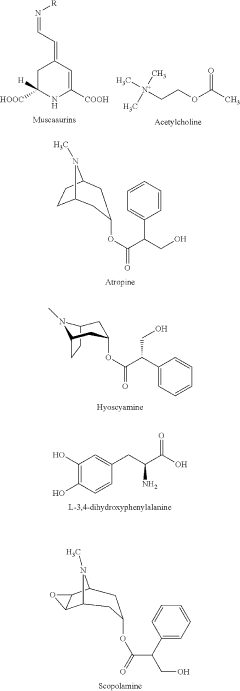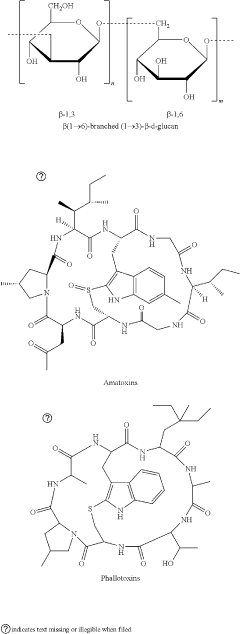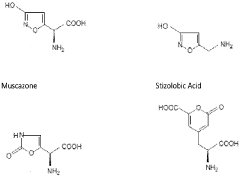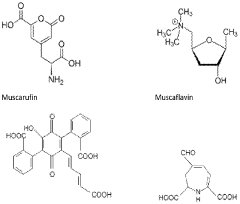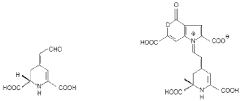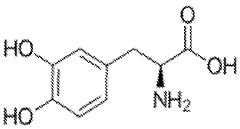The Role of Muscimol in synaptic Inhibition
JUL 4, 20259 MIN READ
Generate Your Research Report Instantly with AI Agent
Patsnap Eureka helps you evaluate technical feasibility & market potential.
Muscimol Background
Muscimol, a potent GABA receptor agonist, has played a pivotal role in neuroscience research, particularly in the study of synaptic inhibition. This naturally occurring psychoactive compound is derived from the Amanita muscaria mushroom, commonly known as the fly agaric. Its discovery and subsequent isolation in the 1960s marked a significant milestone in our understanding of inhibitory neurotransmission.
The chemical structure of muscimol closely resembles that of γ-aminobutyric acid (GABA), the primary inhibitory neurotransmitter in the mammalian central nervous system. This structural similarity allows muscimol to bind to GABA receptors with high affinity, particularly to GABA-A receptors, which are ligand-gated ion channels that mediate fast synaptic inhibition.
Historically, the use of muscimol in neuroscience research began in the 1970s, following the elucidation of its pharmacological properties. Early studies demonstrated its potent inhibitory effects on neuronal firing, which led to its widespread adoption as a tool for investigating GABAergic neurotransmission and neural circuit function.
The importance of muscimol in synaptic inhibition research stems from its ability to selectively activate GABA-A receptors, thereby mimicking the effects of endogenous GABA. This property has made muscimol an invaluable tool for probing the role of inhibitory neurotransmission in various physiological and pathological processes, including learning and memory, anxiety, epilepsy, and neurodevelopmental disorders.
Over the years, muscimol has been employed in a wide range of experimental paradigms. In vitro studies have utilized muscimol to investigate the biophysical properties of GABA-A receptors and their modulation by various compounds. In vivo, muscimol has been used for local circuit manipulation through microinjections, allowing researchers to examine the functional roles of specific brain regions in behavior and cognition.
The advent of optogenetic techniques in the early 2000s initially seemed to overshadow the use of pharmacological tools like muscimol. However, muscimol has maintained its relevance due to its unique advantages, such as its ability to activate all GABA-A receptors in a targeted area, regardless of cell type or genetic manipulation.
Recent developments in muscimol research have focused on its potential therapeutic applications. Studies have explored its use in treating various neurological and psychiatric disorders, leveraging its potent inhibitory effects to modulate aberrant neural activity. Additionally, synthetic analogues of muscimol have been developed, aiming to enhance its pharmacokinetic properties and specificity for different GABA receptor subtypes.
The chemical structure of muscimol closely resembles that of γ-aminobutyric acid (GABA), the primary inhibitory neurotransmitter in the mammalian central nervous system. This structural similarity allows muscimol to bind to GABA receptors with high affinity, particularly to GABA-A receptors, which are ligand-gated ion channels that mediate fast synaptic inhibition.
Historically, the use of muscimol in neuroscience research began in the 1970s, following the elucidation of its pharmacological properties. Early studies demonstrated its potent inhibitory effects on neuronal firing, which led to its widespread adoption as a tool for investigating GABAergic neurotransmission and neural circuit function.
The importance of muscimol in synaptic inhibition research stems from its ability to selectively activate GABA-A receptors, thereby mimicking the effects of endogenous GABA. This property has made muscimol an invaluable tool for probing the role of inhibitory neurotransmission in various physiological and pathological processes, including learning and memory, anxiety, epilepsy, and neurodevelopmental disorders.
Over the years, muscimol has been employed in a wide range of experimental paradigms. In vitro studies have utilized muscimol to investigate the biophysical properties of GABA-A receptors and their modulation by various compounds. In vivo, muscimol has been used for local circuit manipulation through microinjections, allowing researchers to examine the functional roles of specific brain regions in behavior and cognition.
The advent of optogenetic techniques in the early 2000s initially seemed to overshadow the use of pharmacological tools like muscimol. However, muscimol has maintained its relevance due to its unique advantages, such as its ability to activate all GABA-A receptors in a targeted area, regardless of cell type or genetic manipulation.
Recent developments in muscimol research have focused on its potential therapeutic applications. Studies have explored its use in treating various neurological and psychiatric disorders, leveraging its potent inhibitory effects to modulate aberrant neural activity. Additionally, synthetic analogues of muscimol have been developed, aiming to enhance its pharmacokinetic properties and specificity for different GABA receptor subtypes.
Neurotransmitter Market
The neurotransmitter market has experienced significant growth in recent years, driven by the increasing prevalence of neurological disorders and the growing demand for effective treatments. This market segment encompasses a wide range of compounds, including gamma-aminobutyric acid (GABA), glutamate, dopamine, serotonin, and acetylcholine, among others. Muscimol, a potent GABA receptor agonist, plays a crucial role in synaptic inhibition and has garnered attention for its potential therapeutic applications.
The global neurotransmitter market is projected to expand at a steady pace, with a particular focus on compounds that modulate inhibitory neurotransmission. The rising incidence of anxiety disorders, epilepsy, and other neurological conditions has fueled the demand for GABA-related therapeutics, including muscimol and its derivatives. Additionally, the aging population and the associated increase in neurodegenerative diseases have further bolstered market growth.
In terms of market segmentation, the neurotransmitter market can be broadly categorized into excitatory and inhibitory neurotransmitters. The inhibitory neurotransmitter segment, which includes GABA and its agonists like muscimol, has shown promising growth potential. This is largely due to the increasing recognition of the role of inhibitory neurotransmission in various neurological and psychiatric disorders.
The pharmaceutical industry has shown a keen interest in developing novel compounds that target GABA receptors, with muscimol serving as a model compound for many of these research efforts. Several biotechnology and pharmaceutical companies are actively exploring the potential of muscimol and related compounds in treating conditions such as insomnia, anxiety, and epilepsy.
Market trends indicate a growing emphasis on personalized medicine approaches in neurology, which could potentially drive the demand for specific neurotransmitter modulators like muscimol. Furthermore, advancements in drug delivery systems and formulation technologies are expected to enhance the efficacy and safety profiles of neurotransmitter-based therapies, potentially expanding their market reach.
The competitive landscape of the neurotransmitter market is characterized by the presence of both established pharmaceutical companies and emerging biotechnology firms. Key players are investing heavily in research and development to discover novel compounds and expand their product portfolios. Collaborations between academic institutions and industry partners are also becoming increasingly common, fostering innovation in the field of neurotransmitter research.
Geographically, North America and Europe currently dominate the neurotransmitter market, owing to their advanced healthcare infrastructure and high investment in neurological research. However, emerging economies in Asia-Pacific and Latin America are expected to present significant growth opportunities in the coming years, driven by improving healthcare access and rising awareness of neurological disorders.
The global neurotransmitter market is projected to expand at a steady pace, with a particular focus on compounds that modulate inhibitory neurotransmission. The rising incidence of anxiety disorders, epilepsy, and other neurological conditions has fueled the demand for GABA-related therapeutics, including muscimol and its derivatives. Additionally, the aging population and the associated increase in neurodegenerative diseases have further bolstered market growth.
In terms of market segmentation, the neurotransmitter market can be broadly categorized into excitatory and inhibitory neurotransmitters. The inhibitory neurotransmitter segment, which includes GABA and its agonists like muscimol, has shown promising growth potential. This is largely due to the increasing recognition of the role of inhibitory neurotransmission in various neurological and psychiatric disorders.
The pharmaceutical industry has shown a keen interest in developing novel compounds that target GABA receptors, with muscimol serving as a model compound for many of these research efforts. Several biotechnology and pharmaceutical companies are actively exploring the potential of muscimol and related compounds in treating conditions such as insomnia, anxiety, and epilepsy.
Market trends indicate a growing emphasis on personalized medicine approaches in neurology, which could potentially drive the demand for specific neurotransmitter modulators like muscimol. Furthermore, advancements in drug delivery systems and formulation technologies are expected to enhance the efficacy and safety profiles of neurotransmitter-based therapies, potentially expanding their market reach.
The competitive landscape of the neurotransmitter market is characterized by the presence of both established pharmaceutical companies and emerging biotechnology firms. Key players are investing heavily in research and development to discover novel compounds and expand their product portfolios. Collaborations between academic institutions and industry partners are also becoming increasingly common, fostering innovation in the field of neurotransmitter research.
Geographically, North America and Europe currently dominate the neurotransmitter market, owing to their advanced healthcare infrastructure and high investment in neurological research. However, emerging economies in Asia-Pacific and Latin America are expected to present significant growth opportunities in the coming years, driven by improving healthcare access and rising awareness of neurological disorders.
Synaptic Inhibition
Synaptic inhibition is a fundamental process in the nervous system that plays a crucial role in regulating neuronal excitability and shaping neural circuits. This inhibitory mechanism is primarily mediated by the neurotransmitter gamma-aminobutyric acid (GABA) and its receptors. GABA acts on two main types of receptors: GABA-A and GABA-B, with GABA-A receptors being the primary mediators of fast synaptic inhibition.
Muscimol, a potent GABA-A receptor agonist, has emerged as a valuable tool in neuroscience research for studying synaptic inhibition. Derived from the mushroom Amanita muscaria, muscimol selectively activates GABA-A receptors, mimicking the effects of GABA and enhancing inhibitory neurotransmission. Its high affinity and specificity for GABA-A receptors make it an ideal compound for investigating the mechanisms and functions of synaptic inhibition.
When muscimol binds to GABA-A receptors, it causes an influx of chloride ions into the neuron, leading to hyperpolarization of the cell membrane. This hyperpolarization raises the threshold for action potential generation, effectively reducing the neuron's excitability. The resulting inhibitory postsynaptic potentials (IPSPs) can sum temporally and spatially, providing a powerful means of controlling neuronal firing patterns and network activity.
The use of muscimol in research has significantly advanced our understanding of synaptic inhibition in various brain regions and neural circuits. By selectively activating GABA-A receptors, researchers can isolate and study the specific contributions of GABAergic inhibition to neural function. This approach has been particularly valuable in investigating the role of inhibition in sensory processing, motor control, learning and memory, and various neurological disorders.
Muscimol's effects on synaptic inhibition extend beyond individual neurons to influence network-level dynamics. By enhancing inhibitory tone, muscimol can modulate the balance between excitation and inhibition in neural circuits, affecting oscillatory activity and information processing. This has important implications for understanding how inhibitory mechanisms contribute to cognitive functions and how their dysregulation may lead to neurological and psychiatric disorders.
Recent advances in optogenetics and chemogenetics have further expanded the utility of muscimol in studying synaptic inhibition. By combining muscimol administration with these targeted manipulation techniques, researchers can achieve precise spatial and temporal control over inhibitory signaling, allowing for more sophisticated investigations of circuit function and behavior.
In conclusion, muscimol serves as a powerful pharmacological tool for probing the mechanisms and functions of synaptic inhibition. Its selective activation of GABA-A receptors provides valuable insights into the role of inhibitory neurotransmission in shaping neural activity and behavior. As research in this field continues to evolve, muscimol remains an essential compound for elucidating the complex interplay between excitation and inhibition in the nervous system.
Muscimol, a potent GABA-A receptor agonist, has emerged as a valuable tool in neuroscience research for studying synaptic inhibition. Derived from the mushroom Amanita muscaria, muscimol selectively activates GABA-A receptors, mimicking the effects of GABA and enhancing inhibitory neurotransmission. Its high affinity and specificity for GABA-A receptors make it an ideal compound for investigating the mechanisms and functions of synaptic inhibition.
When muscimol binds to GABA-A receptors, it causes an influx of chloride ions into the neuron, leading to hyperpolarization of the cell membrane. This hyperpolarization raises the threshold for action potential generation, effectively reducing the neuron's excitability. The resulting inhibitory postsynaptic potentials (IPSPs) can sum temporally and spatially, providing a powerful means of controlling neuronal firing patterns and network activity.
The use of muscimol in research has significantly advanced our understanding of synaptic inhibition in various brain regions and neural circuits. By selectively activating GABA-A receptors, researchers can isolate and study the specific contributions of GABAergic inhibition to neural function. This approach has been particularly valuable in investigating the role of inhibition in sensory processing, motor control, learning and memory, and various neurological disorders.
Muscimol's effects on synaptic inhibition extend beyond individual neurons to influence network-level dynamics. By enhancing inhibitory tone, muscimol can modulate the balance between excitation and inhibition in neural circuits, affecting oscillatory activity and information processing. This has important implications for understanding how inhibitory mechanisms contribute to cognitive functions and how their dysregulation may lead to neurological and psychiatric disorders.
Recent advances in optogenetics and chemogenetics have further expanded the utility of muscimol in studying synaptic inhibition. By combining muscimol administration with these targeted manipulation techniques, researchers can achieve precise spatial and temporal control over inhibitory signaling, allowing for more sophisticated investigations of circuit function and behavior.
In conclusion, muscimol serves as a powerful pharmacological tool for probing the mechanisms and functions of synaptic inhibition. Its selective activation of GABA-A receptors provides valuable insights into the role of inhibitory neurotransmission in shaping neural activity and behavior. As research in this field continues to evolve, muscimol remains an essential compound for elucidating the complex interplay between excitation and inhibition in the nervous system.
Muscimol Mechanisms
01 Muscimol as a GABA receptor agonist
Muscimol acts as a potent GABA receptor agonist, enhancing inhibitory neurotransmission in the central nervous system. It binds to GABA-A receptors, leading to increased chloride ion influx and subsequent hyperpolarization of neurons, resulting in synaptic inhibition.- Muscimol as a GABA receptor agonist: Muscimol acts as a potent GABA receptor agonist, enhancing inhibitory neurotransmission in the central nervous system. It binds to GABA-A receptors, leading to increased chloride ion influx and subsequent hyperpolarization of neurons, resulting in synaptic inhibition.
- Therapeutic applications of muscimol: Muscimol's synaptic inhibitory effects are explored for various therapeutic applications, including treatment of neurological disorders, anxiety, and sleep disorders. Research focuses on developing formulations and delivery methods to optimize its therapeutic potential while minimizing side effects.
- Muscimol analogs and derivatives: Development of muscimol analogs and derivatives aims to enhance its pharmacological properties, improve selectivity for specific GABA receptor subtypes, and reduce unwanted effects. These modified compounds may offer improved therapeutic profiles for various neurological conditions.
- Neuroimaging and electrophysiological studies: Advanced neuroimaging techniques and electrophysiological studies are employed to investigate muscimol's effects on neural circuits and synaptic transmission. These methods provide insights into the compound's mechanism of action and its impact on brain function.
- Muscimol in combination therapies: Research explores the potential of combining muscimol with other therapeutic agents to enhance synaptic inhibition or achieve synergistic effects. This approach may lead to more effective treatments for complex neurological disorders and expand the clinical applications of muscimol-based therapies.
02 Therapeutic applications of muscimol
Muscimol's synaptic inhibitory effects are explored for various therapeutic applications, including the treatment of neurological disorders, anxiety, and sleep disturbances. Its potential in neuroprotection and as an anticonvulsant is also being investigated.Expand Specific Solutions03 Muscimol delivery methods and formulations
Various delivery methods and formulations are being developed to enhance the efficacy and specificity of muscimol's synaptic inhibition. These include targeted drug delivery systems, controlled-release formulations, and combination therapies to optimize its therapeutic potential.Expand Specific Solutions04 Neuroimaging and electrophysiological studies of muscimol
Advanced neuroimaging techniques and electrophysiological studies are employed to investigate the effects of muscimol on synaptic inhibition and neural circuit function. These methods provide insights into the mechanism of action and potential applications of muscimol in neuroscience research and clinical settings.Expand Specific Solutions05 Synthetic analogs and derivatives of muscimol
Research is focused on developing synthetic analogs and derivatives of muscimol with enhanced pharmacological properties. These modified compounds aim to improve synaptic inhibition efficacy, selectivity, and reduce potential side effects associated with muscimol administration.Expand Specific Solutions
Key Neuroscience Players
The research into muscimol's role in synaptic inhibition is in a mature stage, with significant advancements in understanding its mechanisms. The market for GABA receptor modulators, including muscimol-based therapeutics, is expanding, driven by increasing neurological and psychiatric disorder prevalence. Key players like Abbott Laboratories, AbbVie, and Lundbeck are actively involved in this field, leveraging their extensive pharmaceutical expertise. Academic institutions such as Bar-Ilan University and Louisiana State University contribute valuable research. The technology's maturity is evident from the involvement of diverse companies, ranging from established pharmaceutical giants to specialized firms like ACADIA Pharmaceuticals and Redx Pharma, indicating a competitive and innovative landscape in muscimol-related drug development.
Abbott Laboratories
Technical Solution: Abbott Laboratories has taken a multifaceted approach to studying muscimol's role in synaptic inhibition. Their research combines advanced imaging techniques, such as voltage-sensitive dye imaging and two-photon microscopy, with electrophysiological recordings to map the spatial and temporal dynamics of muscimol-induced inhibition across neural networks[1]. Abbott has also developed novel muscimol-based probes for positron emission tomography (PET) imaging, allowing for non-invasive visualization of GABAergic activity in vivo[3]. Furthermore, they have explored the potential of muscimol as a therapeutic agent in neurological disorders, focusing on its ability to modulate neural oscillations and network synchrony[5].
Strengths: Comprehensive research approach, strong imaging capabilities, potential for diagnostic and therapeutic applications. Weaknesses: Complexity of translating basic research findings into clinical applications, potential off-target effects of muscimol-based compounds.
University of Gottingen
Technical Solution: The University of Gottingen has made significant contributions to understanding muscimol's role in synaptic inhibition through a combination of molecular, cellular, and systems-level approaches. Their research has utilized advanced optogenetic techniques to selectively activate GABAergic interneurons while simultaneously applying muscimol, allowing for precise dissection of inhibitory circuit dynamics[2]. The university has also developed novel computational models to predict the effects of muscimol on large-scale neural networks, providing insights into how localized inhibition can influence global brain states[4]. Additionally, their studies have explored the differential effects of muscimol on various GABA-A receptor subunits, shedding light on the molecular basis of its inhibitory actions[6].
Strengths: Interdisciplinary approach, strong computational modeling capabilities, access to diverse experimental techniques. Weaknesses: Potential limitations in translating findings to clinical applications, focus primarily on basic research rather than drug development.
Muscimol Research
Amanita muscaria compounds
PatentPendingUS20240050502A1
Innovation
- Development of purified Amanita muscaria compound compositions and formulations comprising specific ratios of ibotenic acid, muscimol, and other compounds, which are structurally distinct and free from other Amanita muscaria compounds, combined with excipients and serotonergic drugs, psilocybin derivatives, or cannabinoids to create pharmaceutical formulations for therapeutic use.
Amanita muscaria compounds
PatentWO2022132691A1
Innovation
- Development of compositions comprising purified Amanita muscaria compounds, such as ibotenic acid and muscimol, in specific molar ratios, combined with excipients, to create pharmaceutical formulations that regulate neurotransmitter receptor activity and treat psychological disorders, compulsive disorders, and depressive disorders, while minimizing toxic effects.
Neuropharmacology Regs
Neuropharmacology regulations play a crucial role in governing the research, development, and use of drugs that affect the nervous system, including muscimol and its role in synaptic inhibition. These regulations are designed to ensure the safety, efficacy, and ethical use of neuropharmacological agents.
The regulatory framework for neuropharmacology encompasses various aspects of drug development, from preclinical studies to clinical trials and post-market surveillance. In the case of muscimol, a potent GABA receptor agonist, regulatory bodies such as the FDA and EMA closely monitor its research and potential therapeutic applications.
One key area of regulation is the control of substances used in neuropharmacological research. Muscimol, being a psychoactive compound, is subject to strict controls to prevent misuse and ensure its availability for legitimate scientific purposes. Researchers must obtain appropriate licenses and permissions to work with muscimol and related compounds.
Clinical trials involving muscimol or other GABAergic agents are subject to rigorous oversight. Regulatory agencies require comprehensive preclinical data demonstrating safety and potential efficacy before approving human studies. This includes detailed information on the mechanism of action, pharmacokinetics, and potential side effects of the compound.
Ethical considerations are paramount in neuropharmacology regulations, particularly when studying compounds that affect cognitive function and behavior. Research protocols involving muscimol must undergo thorough ethical review to ensure the protection of human subjects and adherence to principles of informed consent.
Regulations also address the manufacturing and quality control of neuropharmacological agents. Strict guidelines govern the production of muscimol and related compounds to ensure purity, consistency, and safety. This includes requirements for Good Manufacturing Practices (GMP) and rigorous quality assurance protocols.
As research on muscimol's role in synaptic inhibition progresses, regulatory frameworks may evolve to accommodate new findings and potential therapeutic applications. This could include the development of specific guidelines for GABAergic modulators or the refinement of existing regulations to address unique aspects of drugs targeting inhibitory neurotransmission.
International cooperation is increasingly important in neuropharmacology regulations. Harmonization efforts aim to streamline research and development processes across borders while maintaining high standards of safety and efficacy. This is particularly relevant for muscimol research, as its potential applications span various neurological and psychiatric conditions of global concern.
The regulatory framework for neuropharmacology encompasses various aspects of drug development, from preclinical studies to clinical trials and post-market surveillance. In the case of muscimol, a potent GABA receptor agonist, regulatory bodies such as the FDA and EMA closely monitor its research and potential therapeutic applications.
One key area of regulation is the control of substances used in neuropharmacological research. Muscimol, being a psychoactive compound, is subject to strict controls to prevent misuse and ensure its availability for legitimate scientific purposes. Researchers must obtain appropriate licenses and permissions to work with muscimol and related compounds.
Clinical trials involving muscimol or other GABAergic agents are subject to rigorous oversight. Regulatory agencies require comprehensive preclinical data demonstrating safety and potential efficacy before approving human studies. This includes detailed information on the mechanism of action, pharmacokinetics, and potential side effects of the compound.
Ethical considerations are paramount in neuropharmacology regulations, particularly when studying compounds that affect cognitive function and behavior. Research protocols involving muscimol must undergo thorough ethical review to ensure the protection of human subjects and adherence to principles of informed consent.
Regulations also address the manufacturing and quality control of neuropharmacological agents. Strict guidelines govern the production of muscimol and related compounds to ensure purity, consistency, and safety. This includes requirements for Good Manufacturing Practices (GMP) and rigorous quality assurance protocols.
As research on muscimol's role in synaptic inhibition progresses, regulatory frameworks may evolve to accommodate new findings and potential therapeutic applications. This could include the development of specific guidelines for GABAergic modulators or the refinement of existing regulations to address unique aspects of drugs targeting inhibitory neurotransmission.
International cooperation is increasingly important in neuropharmacology regulations. Harmonization efforts aim to streamline research and development processes across borders while maintaining high standards of safety and efficacy. This is particularly relevant for muscimol research, as its potential applications span various neurological and psychiatric conditions of global concern.
Muscimol Applications
Muscimol, a potent GABA receptor agonist, has found diverse applications across various fields, particularly in neuroscience research and potential therapeutic interventions. In neuroscience, muscimol serves as a valuable tool for investigating GABAergic signaling mechanisms and their role in neural circuits. Researchers utilize muscimol to selectively activate GABA receptors, allowing for the study of inhibitory neurotransmission and its effects on neuronal activity patterns.
In the realm of pharmacology, muscimol has been explored as a potential therapeutic agent for various neurological and psychiatric disorders. Its ability to enhance GABAergic inhibition has led to investigations into its efficacy in treating conditions such as epilepsy, anxiety disorders, and sleep disturbances. Preclinical studies have shown promising results in animal models, demonstrating muscimol's anticonvulsant and anxiolytic properties.
The field of anesthesiology has also shown interest in muscimol's applications. Its potent inhibitory effects on neural activity have led to investigations into its potential as an adjunct to traditional anesthetics. Researchers have explored the use of muscimol to enhance the depth and duration of anesthesia while potentially reducing the required doses of other anesthetic agents.
In addiction research, muscimol has been studied for its potential to modulate drug-seeking behaviors and withdrawal symptoms. By enhancing GABAergic inhibition, muscimol may help attenuate the hyperexcitability associated with drug withdrawal and reduce cravings in substance use disorders.
Muscimol's applications extend beyond human medicine to veterinary science. It has been investigated as a potential sedative and anxiolytic agent for animals, particularly in situations where stress reduction is crucial, such as during transportation or medical procedures.
In the field of neurodegenerative diseases, muscimol has been explored for its neuroprotective properties. Studies have suggested that muscimol may help mitigate excitotoxicity and oxidative stress, potentially slowing the progression of conditions such as Alzheimer's disease and Parkinson's disease.
The agricultural sector has also found applications for muscimol in pest control. Its insecticidal properties have been investigated as a potential alternative to traditional chemical pesticides, offering a more targeted approach to pest management while minimizing environmental impact.
In the realm of pharmacology, muscimol has been explored as a potential therapeutic agent for various neurological and psychiatric disorders. Its ability to enhance GABAergic inhibition has led to investigations into its efficacy in treating conditions such as epilepsy, anxiety disorders, and sleep disturbances. Preclinical studies have shown promising results in animal models, demonstrating muscimol's anticonvulsant and anxiolytic properties.
The field of anesthesiology has also shown interest in muscimol's applications. Its potent inhibitory effects on neural activity have led to investigations into its potential as an adjunct to traditional anesthetics. Researchers have explored the use of muscimol to enhance the depth and duration of anesthesia while potentially reducing the required doses of other anesthetic agents.
In addiction research, muscimol has been studied for its potential to modulate drug-seeking behaviors and withdrawal symptoms. By enhancing GABAergic inhibition, muscimol may help attenuate the hyperexcitability associated with drug withdrawal and reduce cravings in substance use disorders.
Muscimol's applications extend beyond human medicine to veterinary science. It has been investigated as a potential sedative and anxiolytic agent for animals, particularly in situations where stress reduction is crucial, such as during transportation or medical procedures.
In the field of neurodegenerative diseases, muscimol has been explored for its neuroprotective properties. Studies have suggested that muscimol may help mitigate excitotoxicity and oxidative stress, potentially slowing the progression of conditions such as Alzheimer's disease and Parkinson's disease.
The agricultural sector has also found applications for muscimol in pest control. Its insecticidal properties have been investigated as a potential alternative to traditional chemical pesticides, offering a more targeted approach to pest management while minimizing environmental impact.
Unlock deeper insights with Patsnap Eureka Quick Research — get a full tech report to explore trends and direct your research. Try now!
Generate Your Research Report Instantly with AI Agent
Supercharge your innovation with Patsnap Eureka AI Agent Platform!

